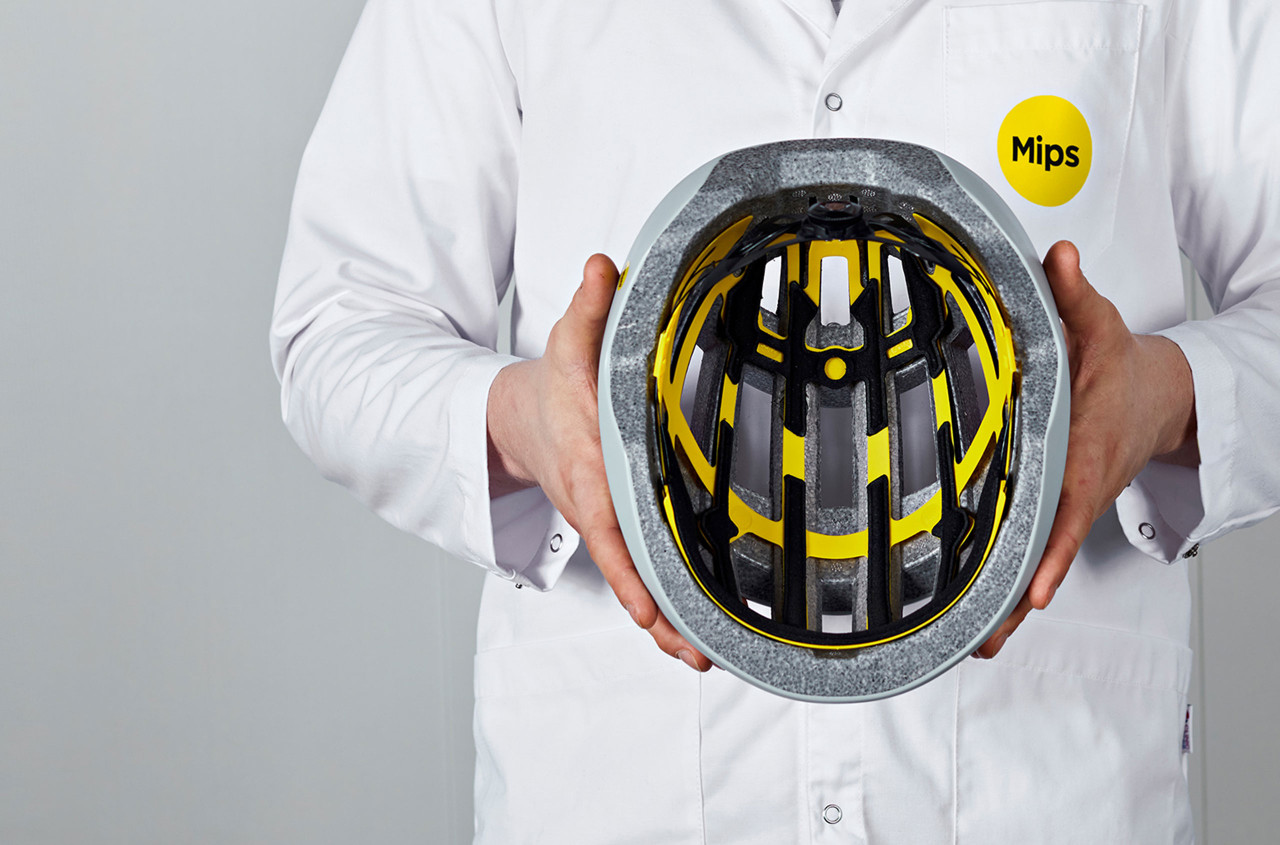Multi-directional impact protection system, or MIPS, is a system designed to do exactly as it’s name would suggest. Reduce the severity of oblique impacts to a cyclist's brain.
Head injuries are a huge issue among cyclists of all disciplines, and finding effective ways to mitigate their effects is of the utmost importance, but how much protection can a few millimetres of slip really provide, and if more importantly, if it has a genuine role to play, why are current helmet standards still refusing to assess a helmets’ ability to withstand rotational impacts.
If we’re going to understand MIPS, we need to understand traumatic brain injuries, or TBI’s. TBI’s can, clinically and without subtlety, be categorised into three classes. Mild, moderate and severe. A concussion is considered to be a mild traumatic brain injury, and is by far the most common head injury(3). There’s actually mixed evidence to suggest helmets, in their current manifestation, can reduce their incidence at all. (1, 2), and therefore it is these that MIPS is aiming to minimise.
However, what most people understand to be a concussion vastly understates the potential long term implications. Even textbooks today will define a concussion as only having temporary neurological side effects, completely resolving within 3 - 4 weeks. Yet long term sequelae are being increasingly recognised; Post-concussion syndrome, chronic traumatic encephalopathy (CTE) and early onset dementia, so preventing concussions isn’t just about reducing your risk of severe brain injuries, it’s about protecting your long term neurological health.
Traditional helmets are generally effective at reducing impacts at a normal to the direction of travel. This is because the helmet allows for the impact to be evenly distributed around your head, rather than into it. However, when oblique forces are involved, they offer limited protection. According to the data, rotational are the most common impacts, and unfortunately, it’s the type our brains are most susceptible to. (4) Rotational injuries cause shearing of the brain either microscopically, leading to diffuse axonal injury, or macroscopically, resulting in brain contusions.
As previously alluded to, MIPS works by allowing for compensatory rotation of your head within the bounds of the helmet following an impact. This allows for further diffusion and minimisation of the oblique kinetic energy transmitted by the crash. At least that’s the theory, but what is the real world impact of these kinds of technologies?
I am yet to find any data officially published by MIPS to verify their claims, but there are studies empirically analysing the benefits. Before continuing, it’s important to know that gathering data regarding the efficacy of helmets is difficult, as randomised controlled trials (the gold standard in clinical research) are ethically irresponsible.
In a paper presented at the International Research Council of Biomechanics Injury (IRCOBI) conference, computer simulations were used to estimate the variance in neurological strain (2) between helmets with and without MIPS. The benefits of airbag style helmets were also investigated, but it’ll be a while before we see those gain widespread adoption. Whilst a relatively small number of helmets were assessed (n=14), the results indicate a statistically significant reduction in neurological strain in MIPS equipped helmets when tested with controlled repeatable oblique impacts. (13.2% strain vs 17.2% respectively, p=0.08, where a 26% correlates to a 50% risk of concussion). For those interested, the helmet that mitigated brain strain to the greatest extent was the POC Octal MIPS, if you’re looking for a new helmet in the near future.
In summary, it does appear that MIPS technology plays a genuine role in reducing the risk of neurological injury following an impact, and reduction in these minor sub clinical impacts will undoubtedly benefit the rider in the long term. Please note that this isn’t specifically an endorsement for the brand MIPS, rather the technology they pioneered. The same concepts are now being implemented by other brands (POC’s SPIN system ) , and you should expect similar results. However, don’t rely on these technologies, always ride within your limits and do your best to keep the rubber side down. But if you are looking for a new helmet, MIPS / SPIN is undoubtedly worth your consideration!
By Dr Tim Davis - Pushys Resident Medical Expert.
Sources:
2 - http://www.ircobi.org/wordpress/downloads/irc17/pdf-files/30.pdf
3 - https://reference.medscape.com/medline/abstract/31103270
4 - https://www.ncbi.nlm.nih.gov/pmc/articles/PMC4090913/






